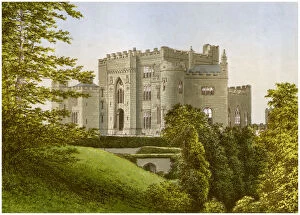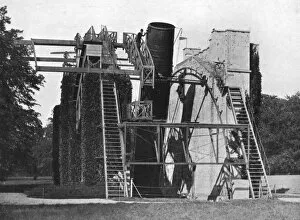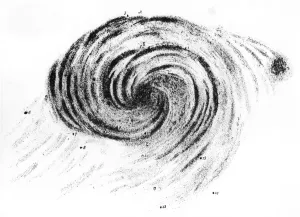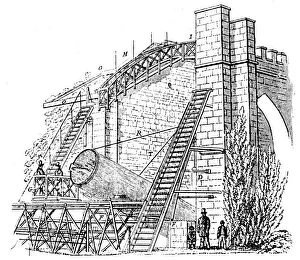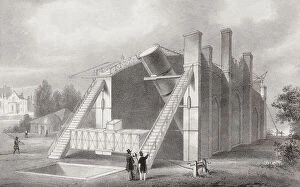Lord Rosse Collection
Lord Rosse, also known as William Parsons, 3rd Earl of Rosse, was a prominent figure in the field of astronomy during the Victorian era
All Professionally Made to Order for Quick Shipping
Lord Rosse, also known as William Parsons, 3rd Earl of Rosse, was a prominent figure in the field of astronomy during the Victorian era. His great telescope, an engineering marvel of its time, played a crucial role in numerous astronomical discoveries. The progress of science in the Victorian era owes much to Lord Rosse's contributions. Through engravings and photogravures, we catch glimpses of his remarkable achievements. One such engraving showcases Lord Rosses' great telescope - a colossal structure that stood tall amidst Birr Castle in County Offaly, Ireland from 1828 to 1845. It was within the confines of this magnificent instrument that Lord Rosse made groundbreaking observations. With meticulous precision and unwavering dedication, he unveiled hidden secrets scattered across our vast universe. A captivating drawing by Lord Rosse himself depicts a spiral galaxy nestled within Canes Venatici - a testament to his keen eye for detail and artistic talent. The impact of Lord Rosses' work reverberated far beyond his time. Even today, we can witness the legacy he left behind at Ireland's Historic Science Centre at Birr Castle. The Leviathan of Parsonstown stands proudly as a symbol of human curiosity and scientific advancement - an awe-inspiring reminder that knowledge knows no bounds. Lord Rosse's accomplishments were not limited to his celestial pursuits alone; he also had an eye for capturing earthly beauty through photography. An enchanting photograph captures Ouse Bridge in York during 1844 - evidence that Lord Rosse possessed both scientific acumen and artistic sensibilities. As we delve into history's annals, it becomes evident that Lord Rosses' influence extended beyond academia; he was revered as one who popularized science among the masses. Robert Stawell Ball aptly describes him as a British astronomer who captivated audiences with his lectures and writings on various scientific subjects.








